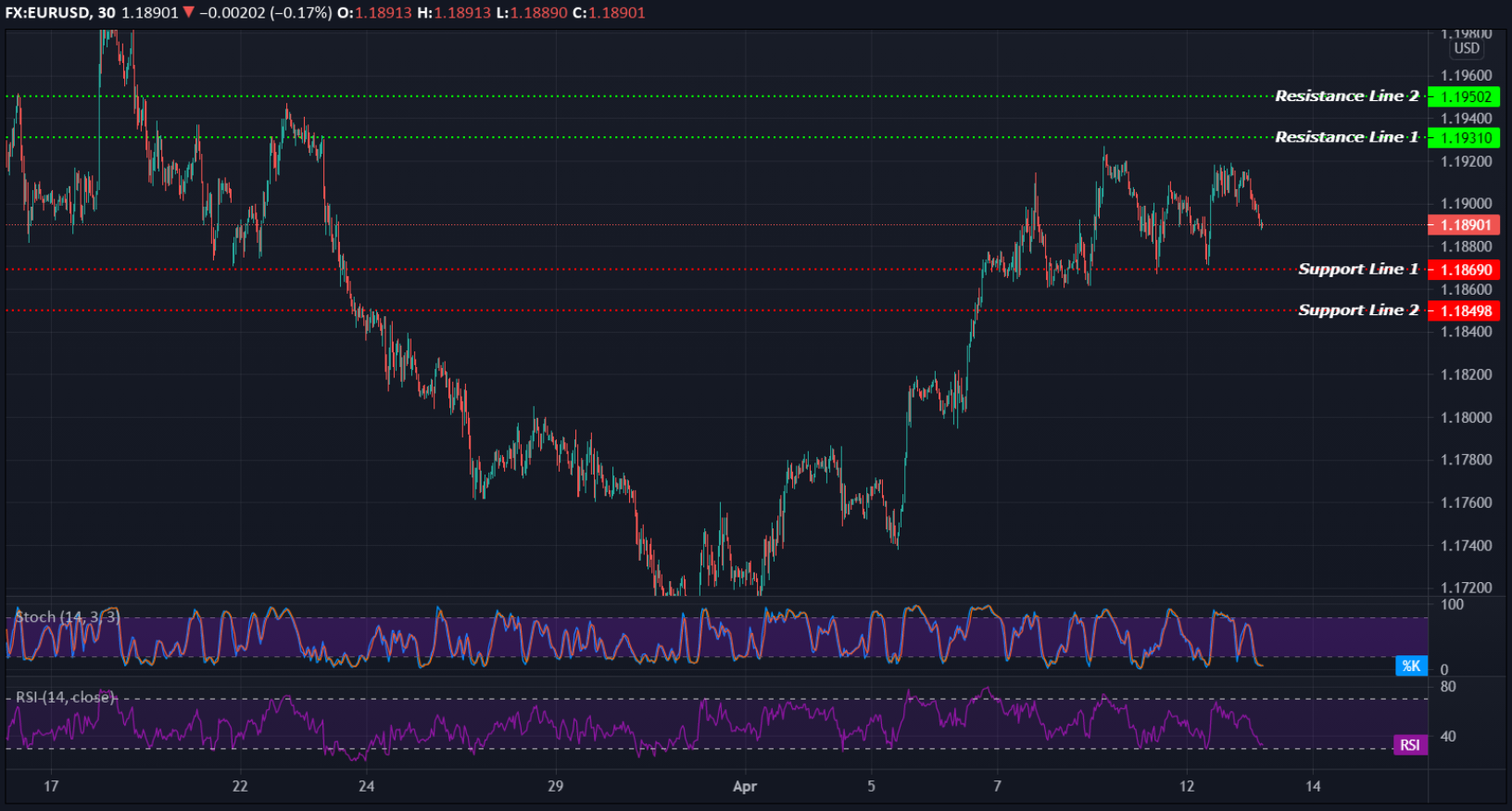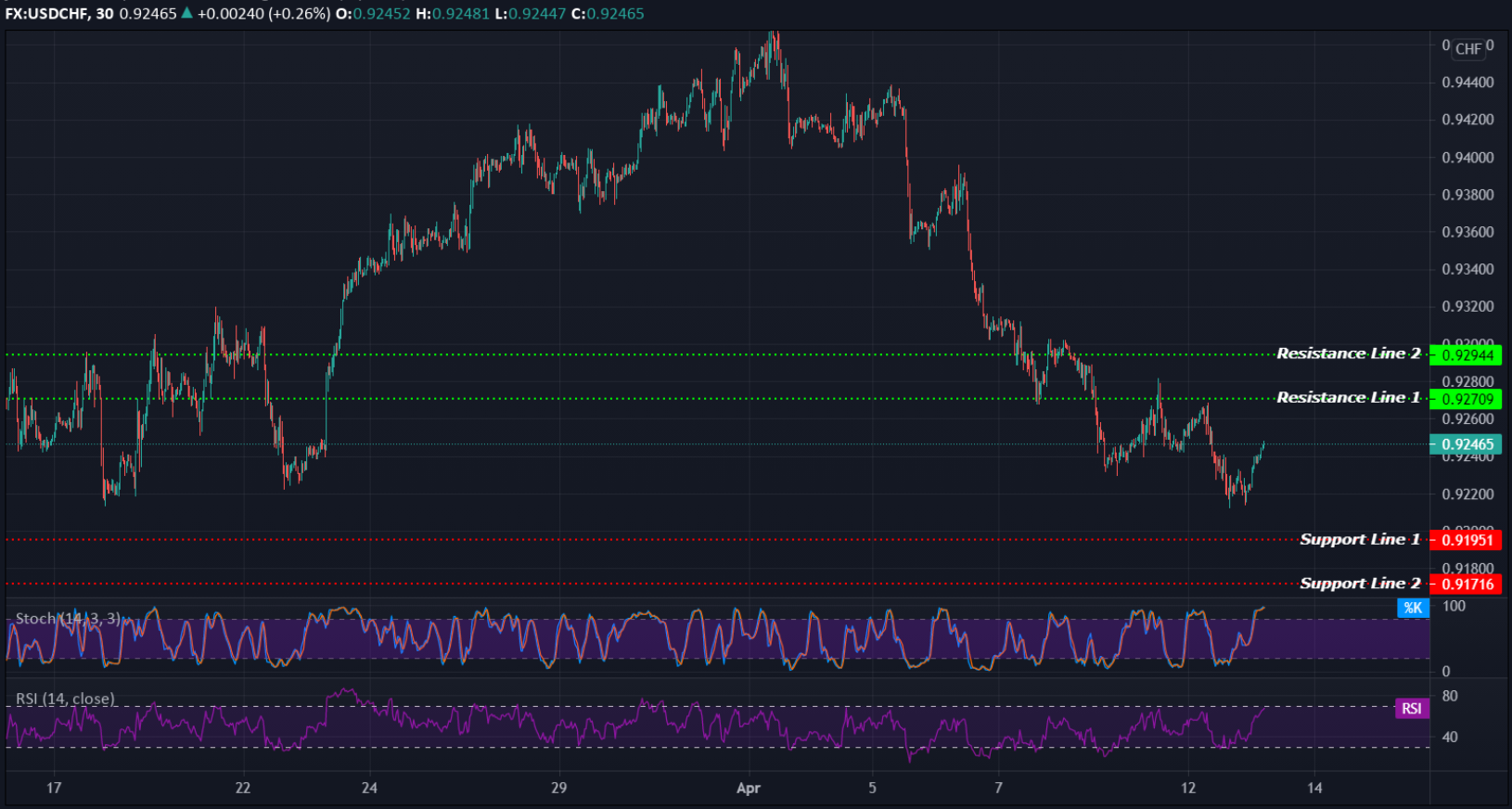INTRADAY TECHNICAL ANALYSIS 13 APRIL (observation as of 05:00 UTC)
[EURUSD]
Important Levels to Watch for:
- Resistance line of 1.19310 and 1.19502.
- Support line of 1.18690 and 1.18498.
Commentary/ Reason:
The euro slipped -0.17% to $1.18901 against the dollar, though still above its recent trough of $1.17035.
The euro were partly weighted by dovish comments Monday from ECB Executive Board Member Panetta, who said the Eurozone would not return to its pre-pandemic growth path before mid-2022.
Boston Federal Reserve Bank President Eric Rosengren meanwhile, said Monday the U.S. economy could see a significant rebound this year due to looser money and fiscal policy but the country’s job market still faced weakness. He said with inflation still below the central bank’s 2% target rate the current “highly accommodative” monetary policy stance remained appropriate.
Also weighing on EUR/USD Tuesday was news that the ECB increased its asset purchases. The ECB on Monday reported that it settled 17.1 billion euros ($20.4 billion) of bond purchases under its pandemic purchase program (PEPP) in the week ended April 9, higher than the 10.6 billion euros of bonds purchased the prior week.

[USDCHF]
Important Levels to Watch for:
- Resistance line of 0.92709 and 0.92944.
- Support line of 0.91951 and 0.91716.
Commentary/ Reason:
The dollar edged 0.26% higher against the Swiss franc, to trade at 0.92465.
Demand for the safe-haven greenback is favoured due to persistent concerns over a resurgence of COVID-19 and global lockdowns.

[GBPUSD]
Important Levels to Watch for:
- Resistance line of 1.37851 and 1.38103.
- Support line of 1.37035 and 1.36783.
Commentary/ Reason:
The pound sit at $1.37261, eased 0.07% against the dollar on Tuesday.
Concerns related to the AstraZeneca vaccine and Brexit are hitting the pound.
The vaccine of late has been plagued by safety concerns and supply problems. AstraZeneca shot was considered successful until concerns related to blood clots arose, leading to a slowing pace of vaccination.
Another factor weighing on sterling is the effects of Brexit in Northern Ireland. The protocol agreed after the UK’s departure from the Union has resulted in trade barriers between Britain and Northern Ireland. Unionist riots have been hitting the area since late March, escalating as time goes by.
The dollar advance meanwhile were hampered by the ongoing Covid pandemic that has slowed economic growth and is dovish for Fed policy.















